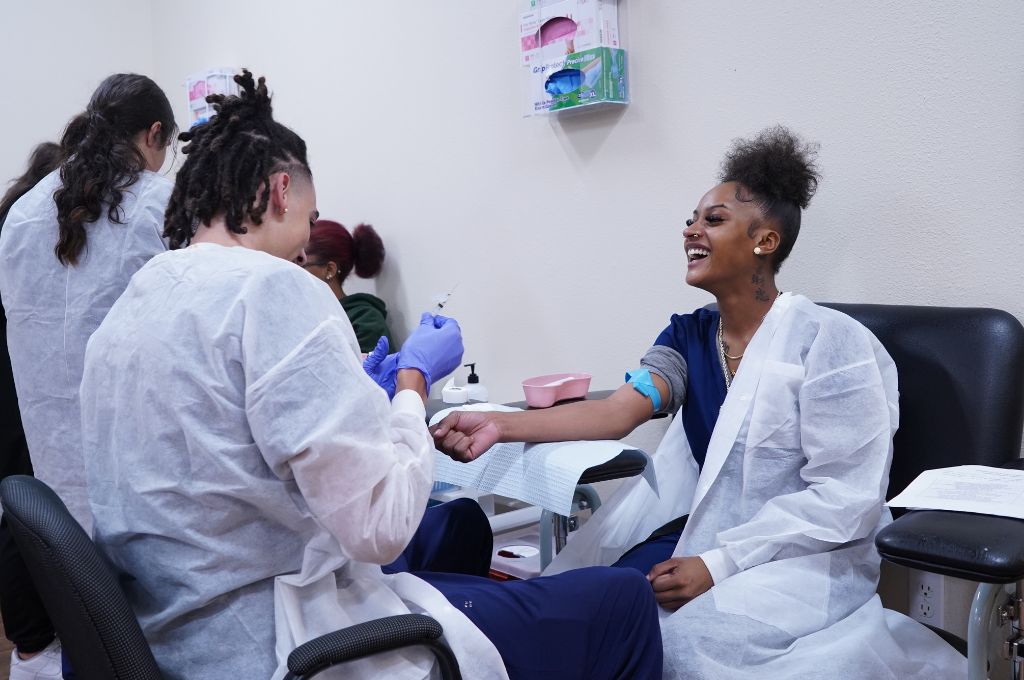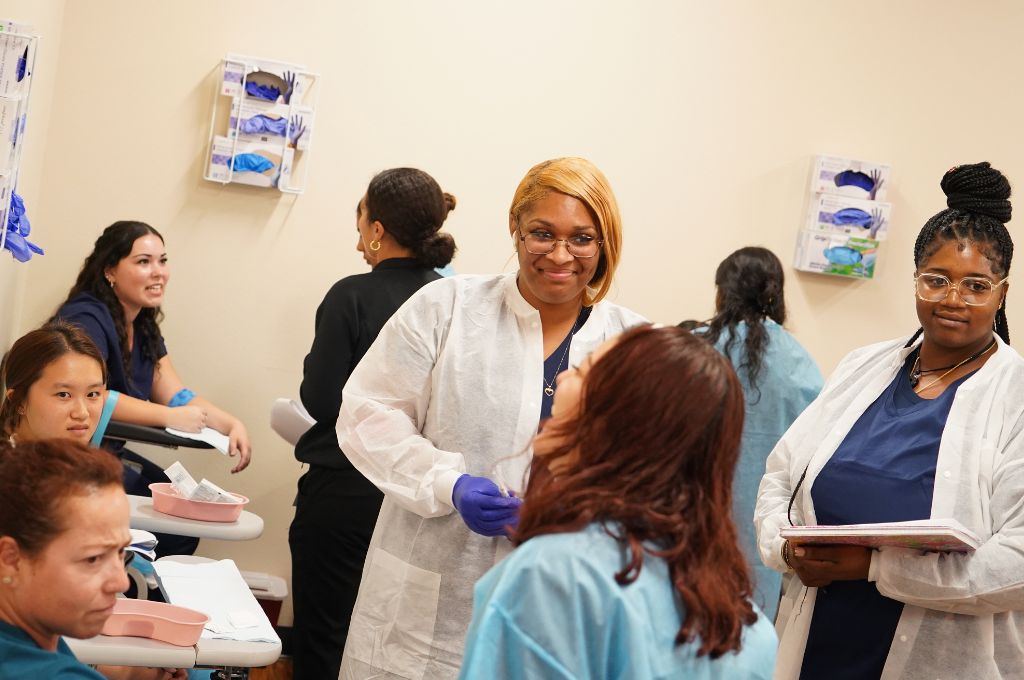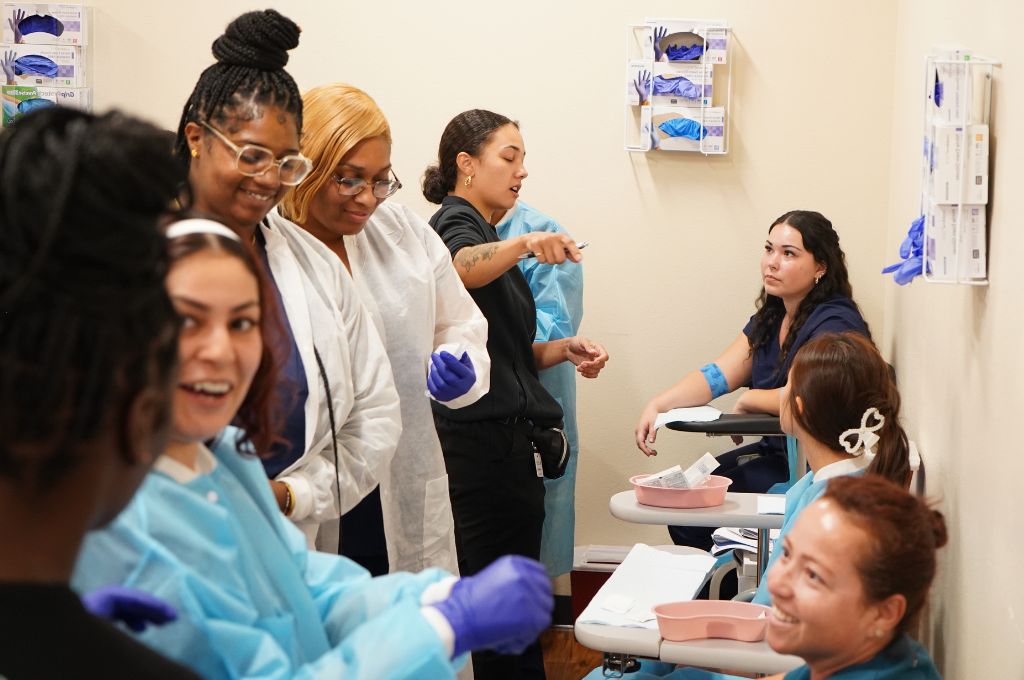Table of Contents
Becoming a phlebotomist can open many doors to a rewarding career in healthcare. But before you can draw blood, you’ll need to decide how to obtain your certification through phlebotomist training.
Various phlebotomist training routes are available, from online phlebotomy training programs to community colleges and vocational schools. Each option has its own set of advantages and challenges.
You want to ensure the route you choose matches your personal learning style, lifestyle, and goals. This blog post will explore these pathways to help aspiring phlebotomists like yourself make informed decisions about your training.
Online Phlebotomist Training Programs
First up—online training. In recent years, this has become a more popular route for busy adults due to its flexibility and accessibility. Many of these programs are self-paced and accessible 24/7 making it easier to work around your schedule.
Generally, this is an affordable route that speeds up phlebotomist training. However, you miss out on hands-on training which significantly boosts learning retention. You may also find it more difficult to secure a job when your program is over as many employers prefer someone with hands-on experience.
Let’s break down the pros and cons of online phlebotomist training a bit further.
Cost of Online Phlebotomist Training
One of the significant benefits of online training is cost-effectiveness. Taking phlebotomy courses online eliminates the need for commuting and allows you to save on other associated expenses.
That said, prices can vary widely, with some courses being surprisingly affordable while others may carry a hefty price tag. The cost of online phlebotomist training programs can range from as low as $500 to upwards of $2000.
You should carefully compare costs and available financial aid or payment plan options to ensure you’re making an economically sound choice.
Read Enough?
Length of Online Phlebotomist Training
The length of online phlebotomist training programs can be appealing to those eager to jumpstart their careers. You can complete many online courses at your own pace, allowing for greater flexibility. This means you can finish the program in a matter of weeks if you dedicate enough time, or stretch it out over several months if needed.
It provides a good balance for those who may be working or have other time commitments. Despite the potential for quick completion, it’s crucial to consider your own personality and learning style when it comes to taking phlebotomy classes online.
Here are some questions to ask yourself:
- Do you do your best work when you’re alone?
- Do you work well on deadlines?
- Do you consider yourself a highly motivated person?
- Are you comfortable with your computer skills?
If you answered “no” to any of these questions, online phlebotomist training may not be the right route for you.
Approval and Certification for Online Phlebotomist Training
Approval is a crucial aspect of any phlebotomist training program, and online courses are no exception. Enrolling in an approved program ensures that the education provided meets industry standards and certification requirements.
Some online phlebotomist training courses may not hold approval because they do not meet state regulations. For example, California has its own specific regulations, so make sure to choose an approved program that meets the standards for the certification test.
Furthermore, the program should adequately prepare you for national certification exams, such as those offered by the American Medical Certification Association (AMCA) or the National Healthcareer Association (NHA).
Here are two questions you should ask when researching potential online phlebotomist training options:
- Through what governing body is the program approved to run? (Please note: Some states like Texas do not require approval.)
- What phlebotomy certification is offered and what measures are taken to ensure students are prepared to pass the exam?

Community College Phlebotomist Training Programs
Community colleges and even 4-year universities also offer phlebotomist training programs. Whether or not this route is right for you is, well, up to you.
If you are planning to obtain a bachelor’s or even master’s degree, it may make the most sense to pursue your certification from a college so you immerse yourself in this type of learning environment. However, if your goal is to get your foot in the door and start working asap, you may want to consider an online or vocational program, as college programs typically take longer to complete and are more expensive.
That said, let’s delve into some of the factors to consider with phlebotomist training at community colleges.
Cost of Community College Phlebotomist Training
As stated above, the cost of attending a community college for phlebotomist training can be more expensive than alternative methods. These classes typically cost anywhere from $1000 – $2500. Four-year universities can increase to upwards of $4000 or more.
On the plus side, community colleges often offer the added benefit of financial aid or grants, making them an attractive option for many students. You may also qualify for in-district rates if you live nearby.
It’s important to consider the full cost of attendance, including lab fees and materials, and explore scholarships and payment plans that can ease the financial burden.
Length of Community College Phlebotomist Training
Community colleges typically structure programs to fit within a traditional academic schedule, usually taking one or two semesters to complete (4-8 months). This timeline allows for a comprehensive curriculum that can include both classroom knowledge and hands-on practical experience.
If you prefer a more structured environment, this can be an ideal setting for phlebotomist training. While this means a longer commitment, it often results in a well-rounded education with ample time to master the necessary skills.
Approval and Certification for Community College Phlebotomist Training
Approval at community colleges is generally a given, but to be safe, always confirm with the school that the program is approved and that graduates are eligible to sit for the certification exam.
Most times the community college is accredited. However, it’s important to understand that accreditation is not a requirement to obtain your phlebotomist training certification.
Let’s break accreditation down a step further:
School accreditation isn’t a requirement in the United States. Accreditation is voluntary, and many private and some public schools are not accredited. Accreditation simply means that a school has recognition from an accrediting agency that it maintains certain educational standards.
That said, sometimes the local reputation of a community college can be an advantage when seeking employment, as employers may recognize and value the training received.
Read Enough?
Vocational School Phlebotomist Training Programs
Vocational schools, also known as trade schools, offer a more focused and efficient approach to training for those interested in pursuing a career as a phlebotomist. These programs typically have a shorter duration and provide hands-on, practical experience in the field.
One of the main draws of vocational school phlebotomist training programs like CALRegional’s is their relatively short duration. These programs can range from a few weeks to several months, depending on the specific program and its curriculum. This allows you to enter the workforce quicker and start earning a salary sooner.
Additionally, vocational school programs often have a more structured and streamlined curriculum, focusing solely on the skills and knowledge necessary for phlebotomists. If your goal is to enter the workforce quickly and with hands-on training, this is probably the route for you.
Cost of Vocational School Phlebotomist Training
Vocational schools offer focused training that is often tailored to specific careers, including phlebotomy. The cost of attending a vocational school can vary significantly but generally falls between online programs and community colleges.
You should ensure that you understand the full cost, including tuition, books, and other fees. Financial aid, scholarships, and payment plans are often available, making vocational schools a viable option for many.
The phlebotomist training programs held through CALRegional’s partner schools cost $2995 or less. You can spread interest-free payment plans over 3-6 months, depending on the length of your program.
Length of Vocational School Phlebotomist Training
Vocational school programs are typically designed to be fast-paced, with many offering full-time schedules that can be completed in as little as a few weeks. This accelerated timeline is ideal for those looking to enter the workforce quickly.
At CALRegional, you can complete our phlebotomist training program in just 3-12 weeks depending on the full-time, part-time, or weekend schedule you choose. To get a full view of the current schedule options available in your area, browse our Enroll page.
Because vocational school programs are fast-paced and require full commitment, you should be prepared for a rigorous learning experience. If you prefer a slower-paced learning environment, attending a community college may be best for you.
Approval and Certification for Vocational School Phlebotomist Training

Approval is equally important when choosing a vocational school for phlebotomist training. An approved program not only ensures that the education meets industry standards but also that graduates are eligible to take certification exams.
It’s crucial to select a school that provides comprehensive training encompassing both classroom and practical components, as hands-on experience is essential in the field of phlebotomy.
CALRegional’s programs, offered through our partner schools, are approved or permitted to operate by the governing bodies that oversee them. For example, all of our phlebotomist training programs in California have approval through the Laboratory Field Services (LFS), a division of the California Department of Public Health.
Conclusion
Choosing the right path to phlebotomy certification starts with conducting some research. Likely your first question will be “Where can I take phlebotomy classes?” The three most popular routes—online programs, community colleges, or vocational schools—each offer unique advantages and challenges. A thorough evaluation of costs, program length, and approvals is essential in making the best choice for your personal and professional goals.
Whether you prioritize flexibility, a structured academic environment, or a fast track to employment, there’s a healthcare training option that can align with your needs.
Remember, the key to a successful career in phlebotomy lies not only in the certification itself but in the quality of training you receive. By investing time in research and preparation, you can set yourself on a path to becoming a skilled and certified phlebotomist, ready to make a positive impact in the healthcare field.
If you’re ready to begin phlebotomist training, consider reaching out to local phlebotomy programs like CALRegional or exploring online resources dedicated to phlebotomy education. By taking proactive steps now, you can ensure a rewarding and fulfilling career in phlebotomy.
Not sure which route to take? Answer a few questions from the quiz below to see if online or in-person learning may be right for you.
